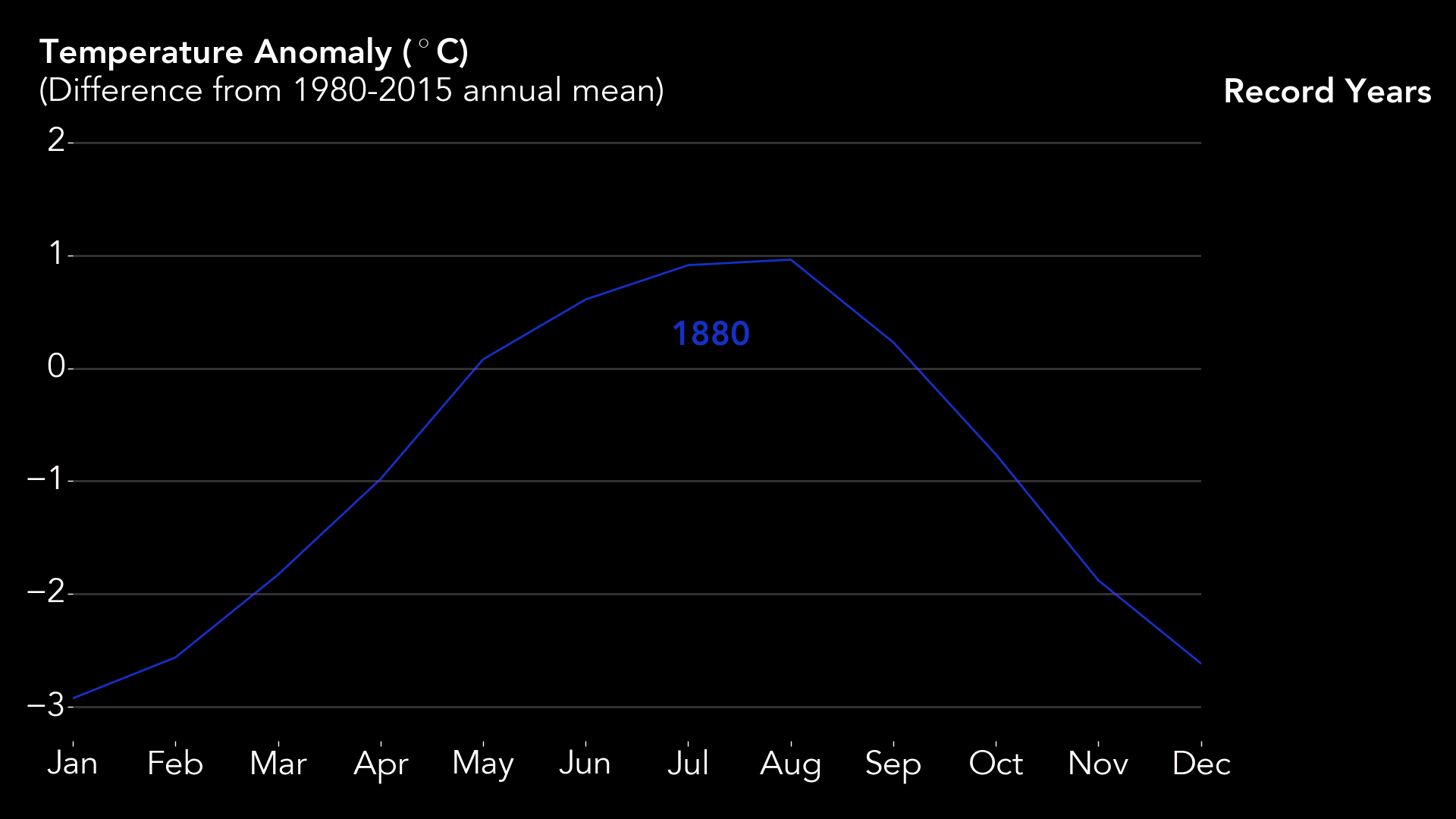Scientists at NASA’s Goddard Institute for Space Studies (GISS) analyzed measurements from 6,300 locations across the globe. They say that Earth’s average surface temperature has risen about 2.0 degrees Fahrenheit (1.1 degrees Celsius) since the late-19th century, largely a result of human emissions into the atmosphere.
Scientists report that Earth’s 2016 surface temperatures were the warmest since modern record-keeping began in 1880, making 2016 the third consecutive hottest year in a row. The findings, announced on January 18, 2017, are based on independent analyses by NASA and the National Oceanic and Atmospheric Administration (NOAA).
The data showed that in 2016, the average global temperatures were 1.78 degrees Fahrenheit (0.99 degrees Celsius) warmer than the mid-20th century mean. The 2016 temperatures continue a long-term warming trend, according to analyses by scientists at NASA’s Goddard Institute for Space Studies (GISS) in New York. The video above has more about those analyses.
GISS Director Gavin Schmidt said in a statement:
2016 is remarkably the third record year in a row in this series.We don’t expect record years every year, but the ongoing long-term warming trend is clear.
How much warmer was your city in 2016? Try this interactive tool

According to a NASA statement:
The planet’s average surface temperature has risen about 2.0 degrees Fahrenheit (1.1 degrees Celsius) since the late 19th century, a change driven largely by increased carbon dioxide and other human-made emissions into the atmosphere.
Most of the warming occurred in the past 35 years, with 16 of the 17 warmest years on record occurring since 2001. Not only was 2016 the warmest year on record, but eight of the 12 months that make up the year – from January through September, with the exception of June – were the warmest on record for those respective months. October, November, and December of 2016 were the second warmest of those months on record – in all three cases, behind records set in 2015.
According to the scientists, phenomena such as El Niño or La Niña, contribute to short-term variations in global average temperature. A warming El Niño event was in effect for most of 2015 and the first third of 2016. Researchers estimate the direct impact of the natural El Niño warming in the tropical Pacific increased the annual global temperature anomaly for 2016 by 0.2 degrees Fahrenheit (0.12 degrees Celsius).
Although 2016 was the hottest year on record globally, not every region on Earth experienced record average temperatures last year. For example, both NASA and NOAA found the 2016 annual mean temperature for the contiguous 48 United States was the second warmest on record. In contrast, the Arctic experienced its warmest year ever, consistent with record low sea ice found in that region for most of the year.
Enjoying EarthSky? Sign up for our free daily newsletter today!
Bottom line: In a joint announcement on January 18, 2017, NASA and NOAA reported that 2016 was the hottest year on record globally, for the third consecutive year, continuing a decades-long warming trend.











